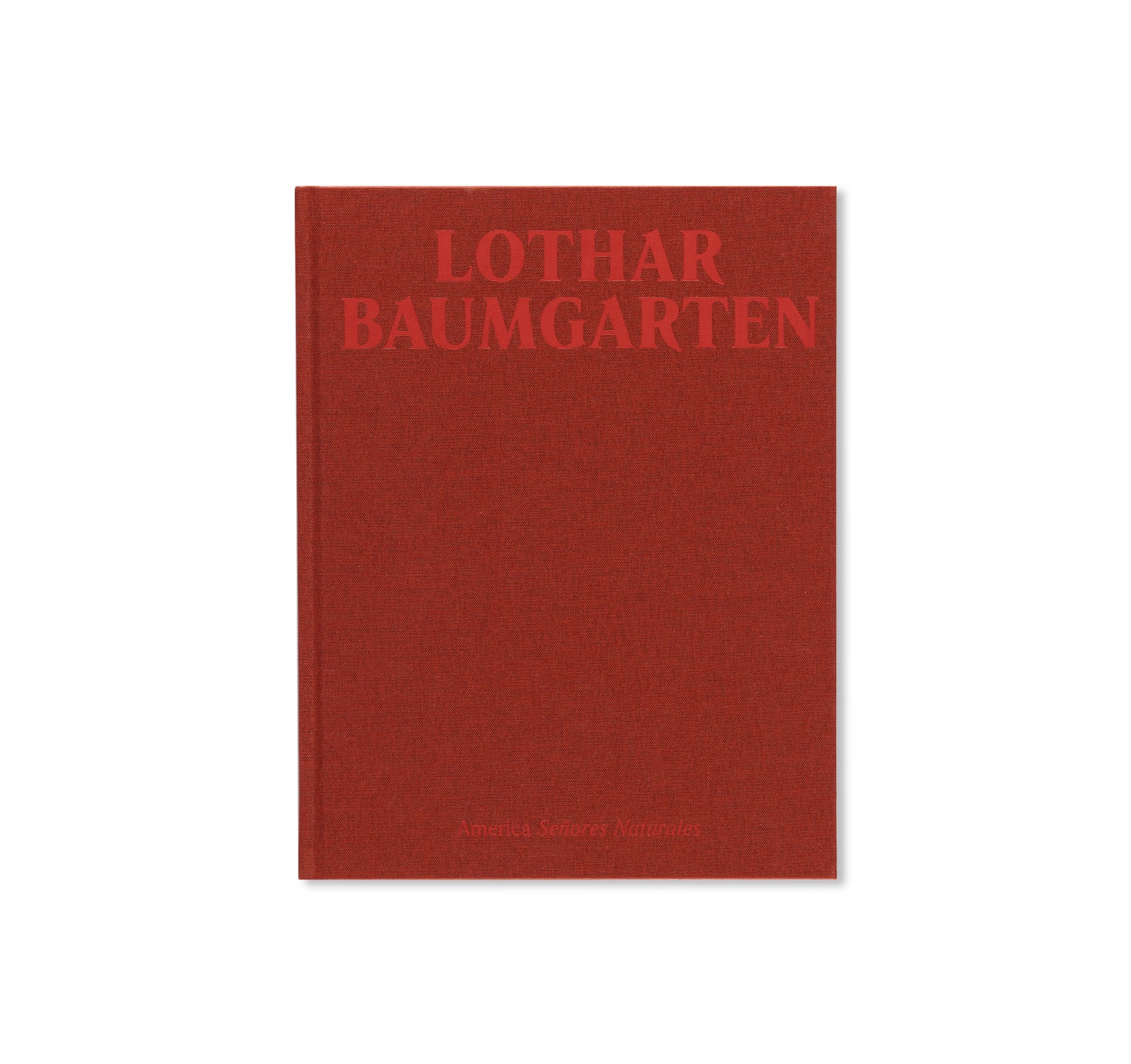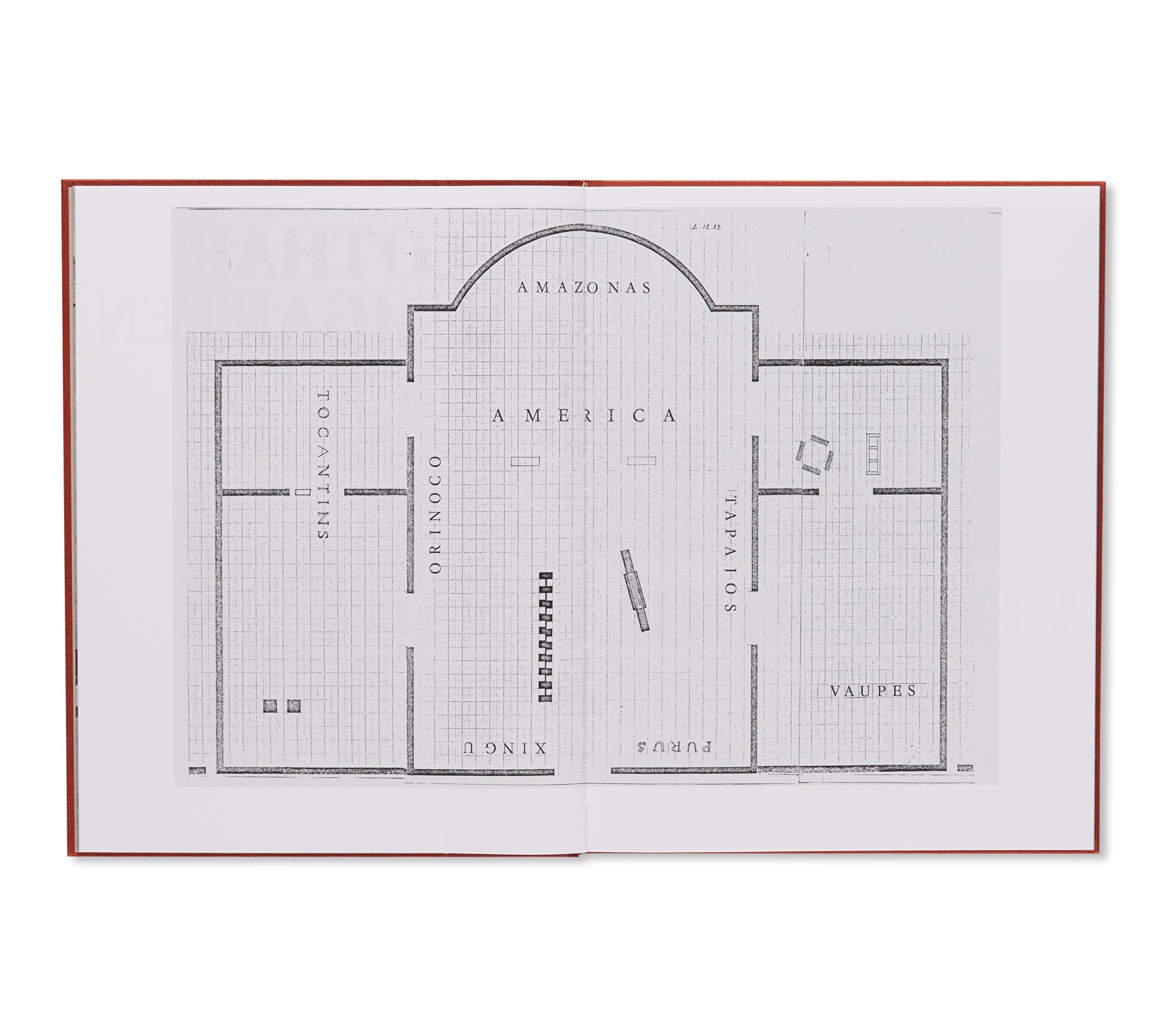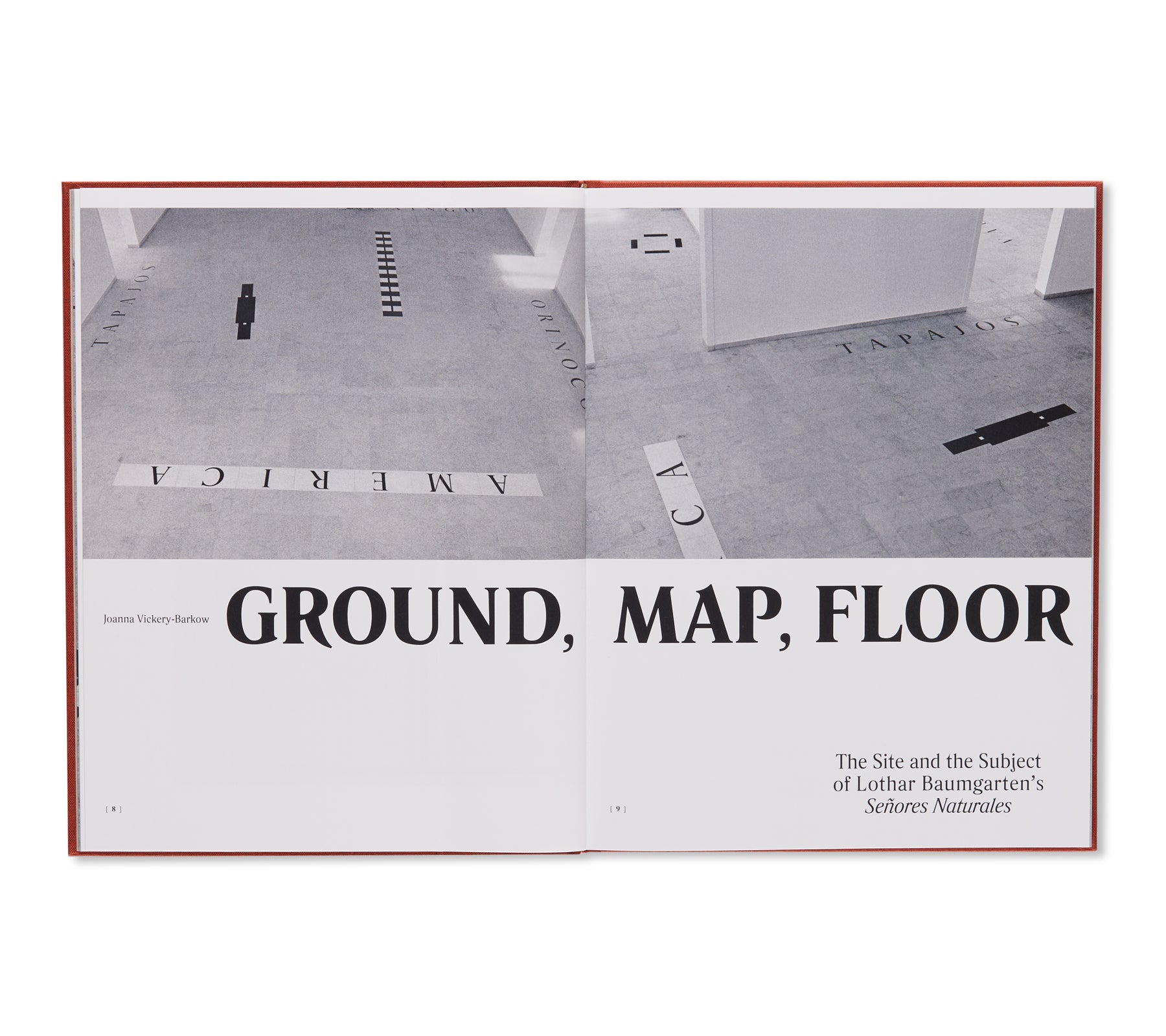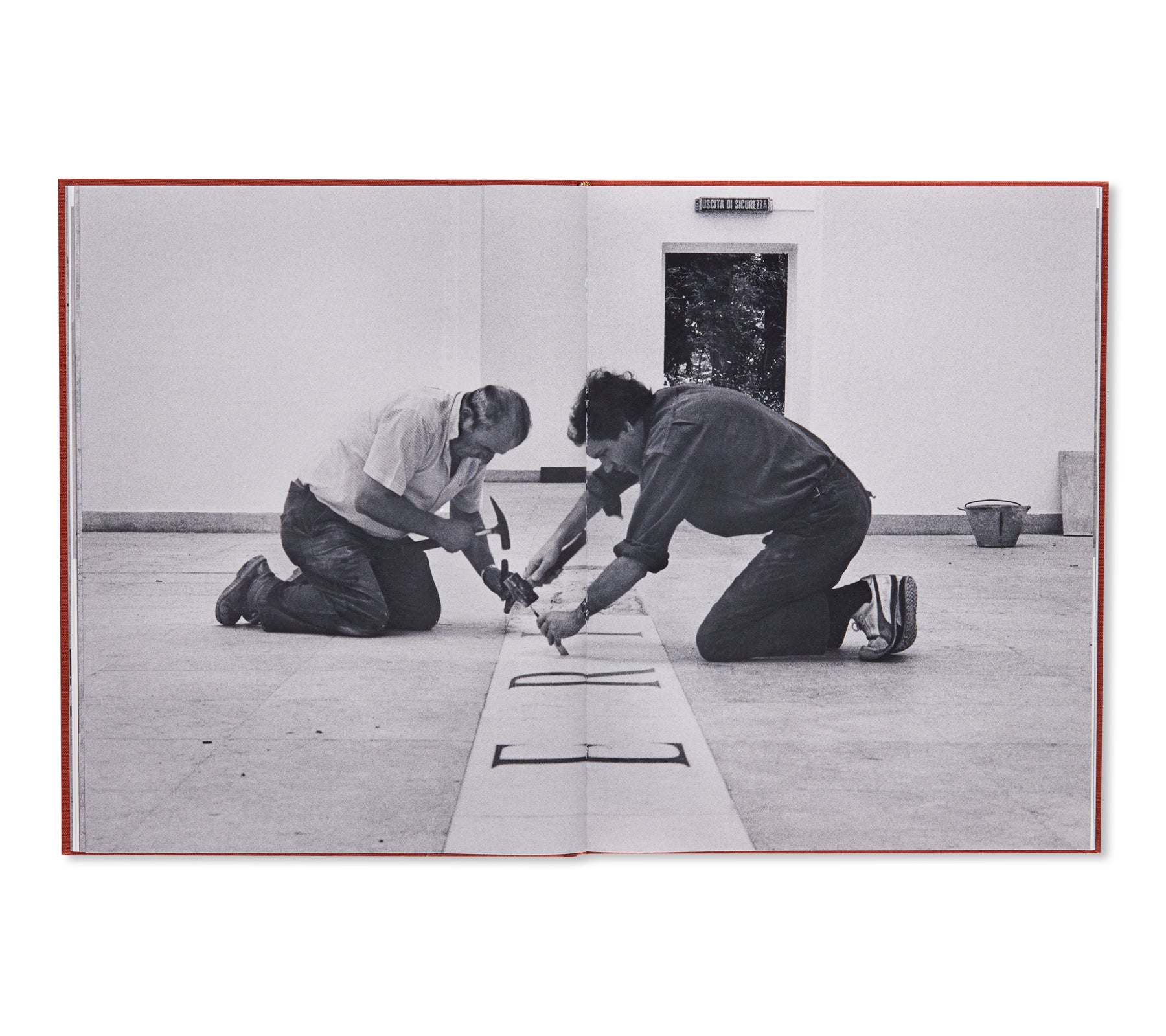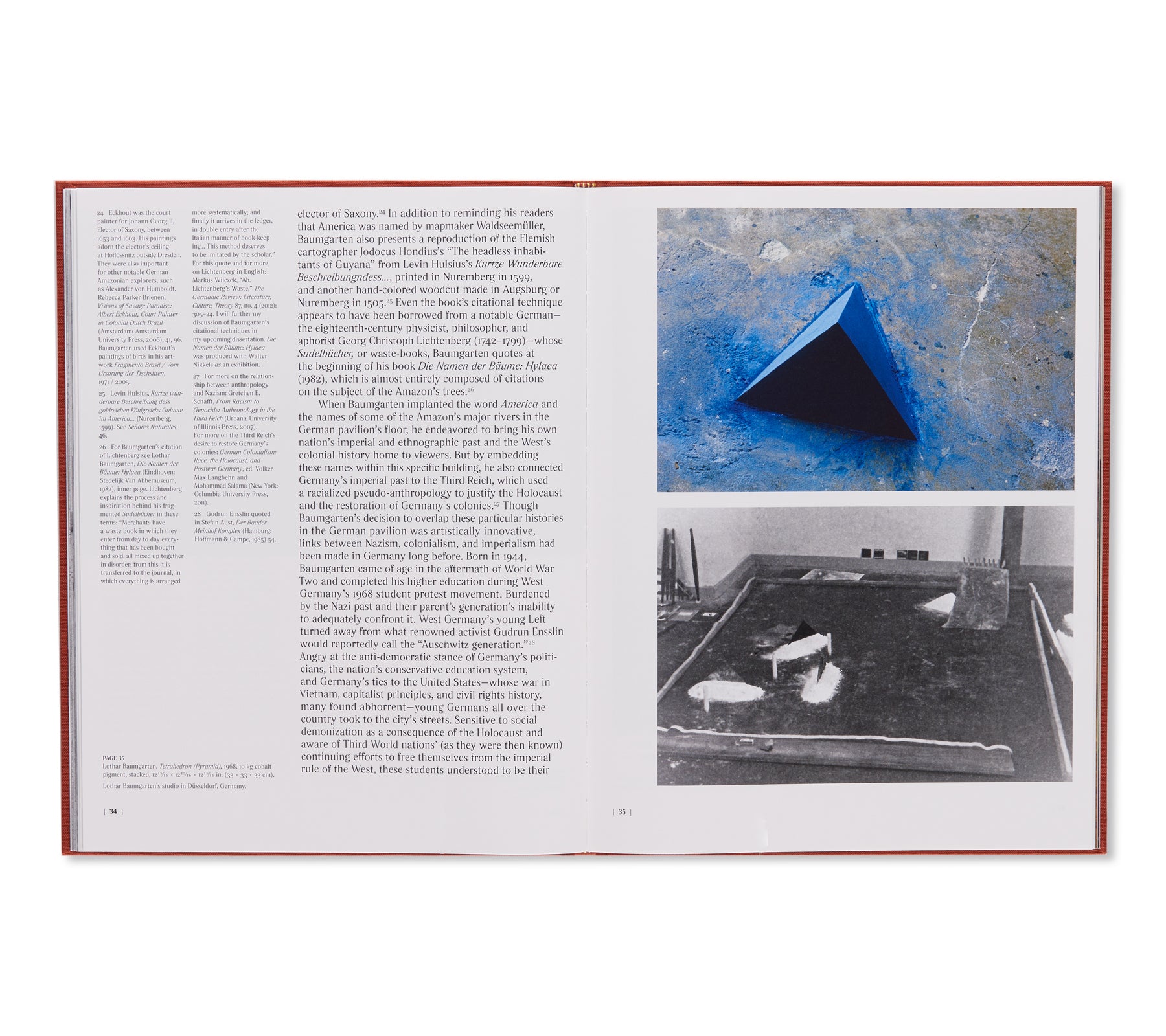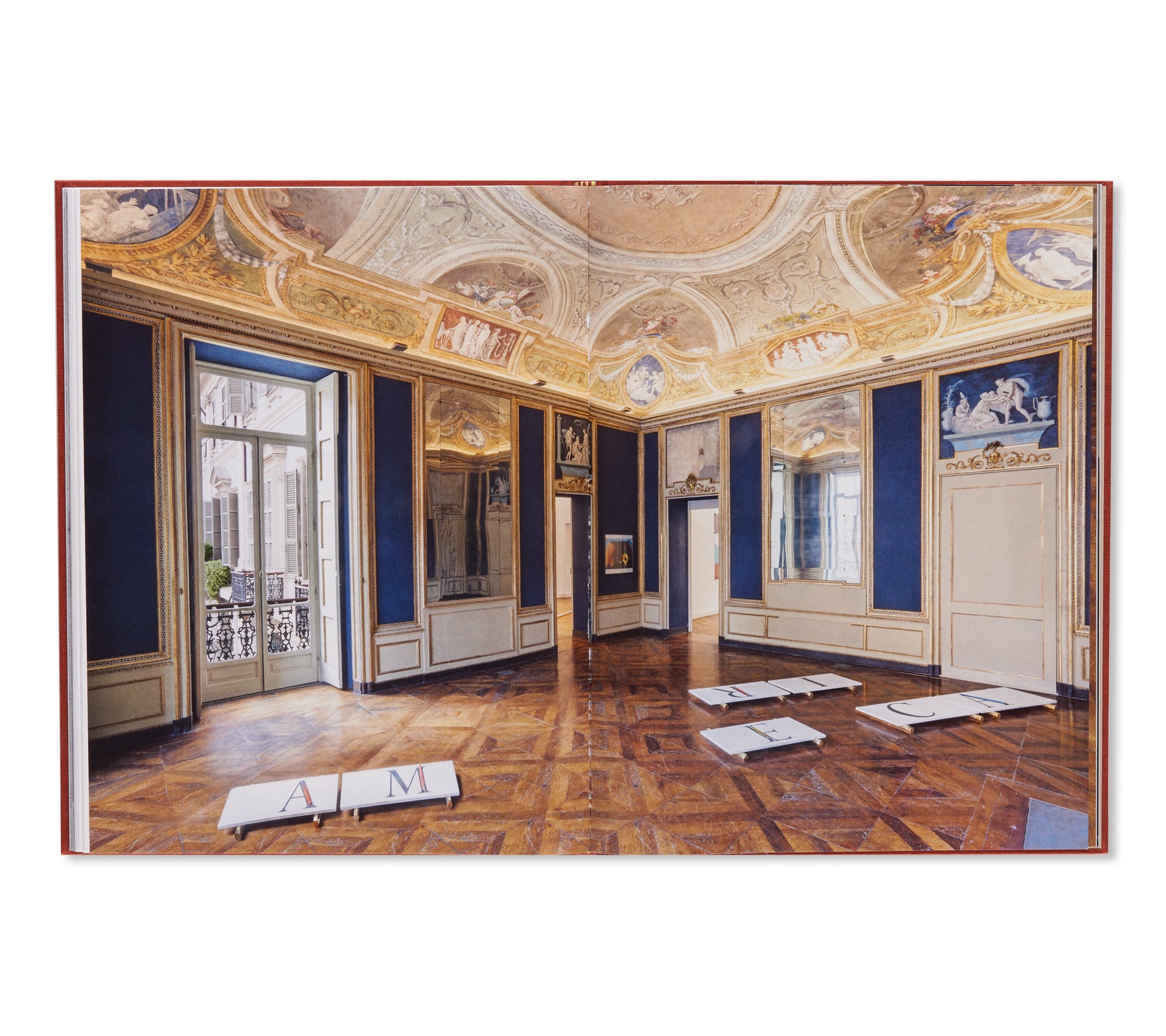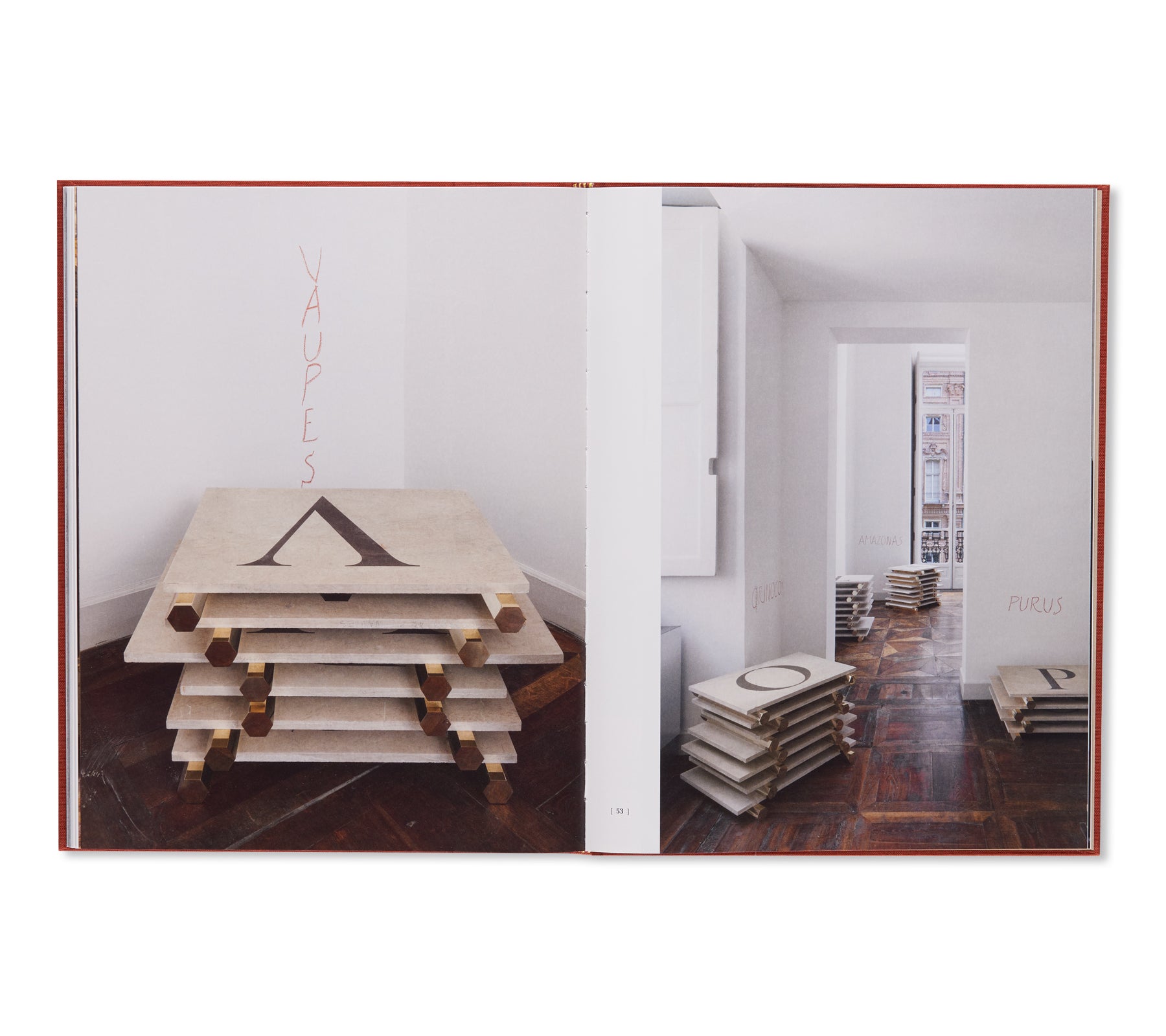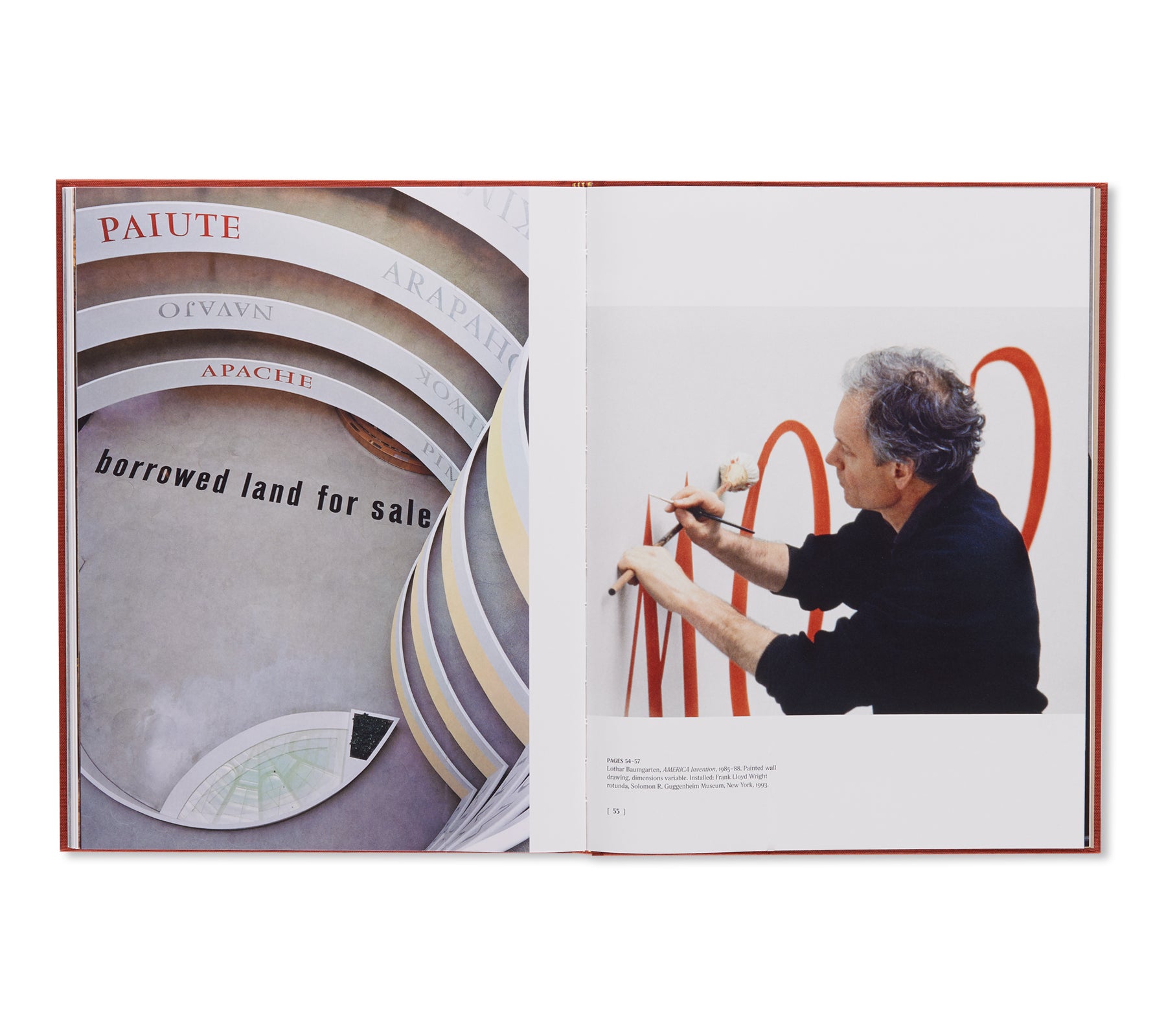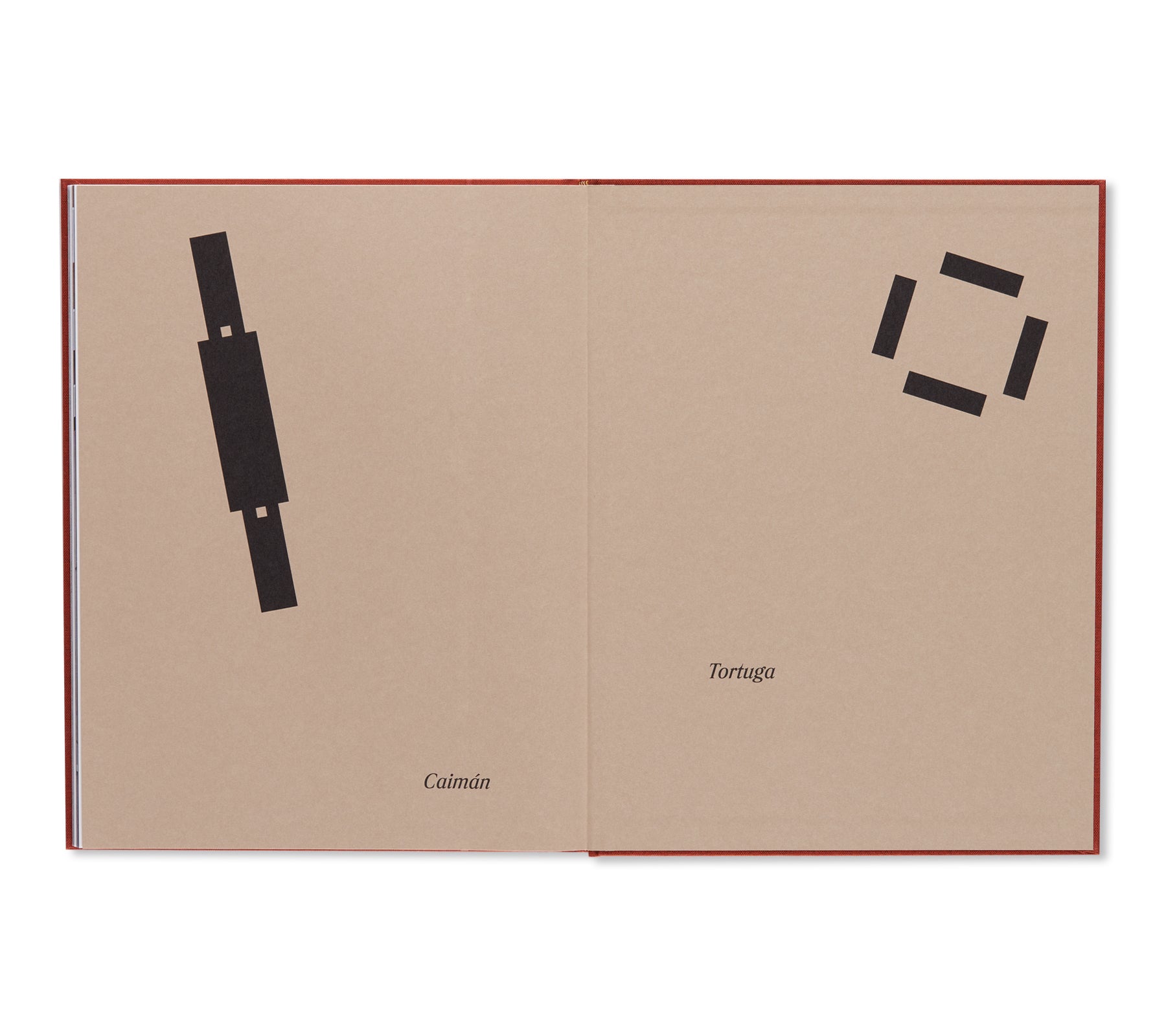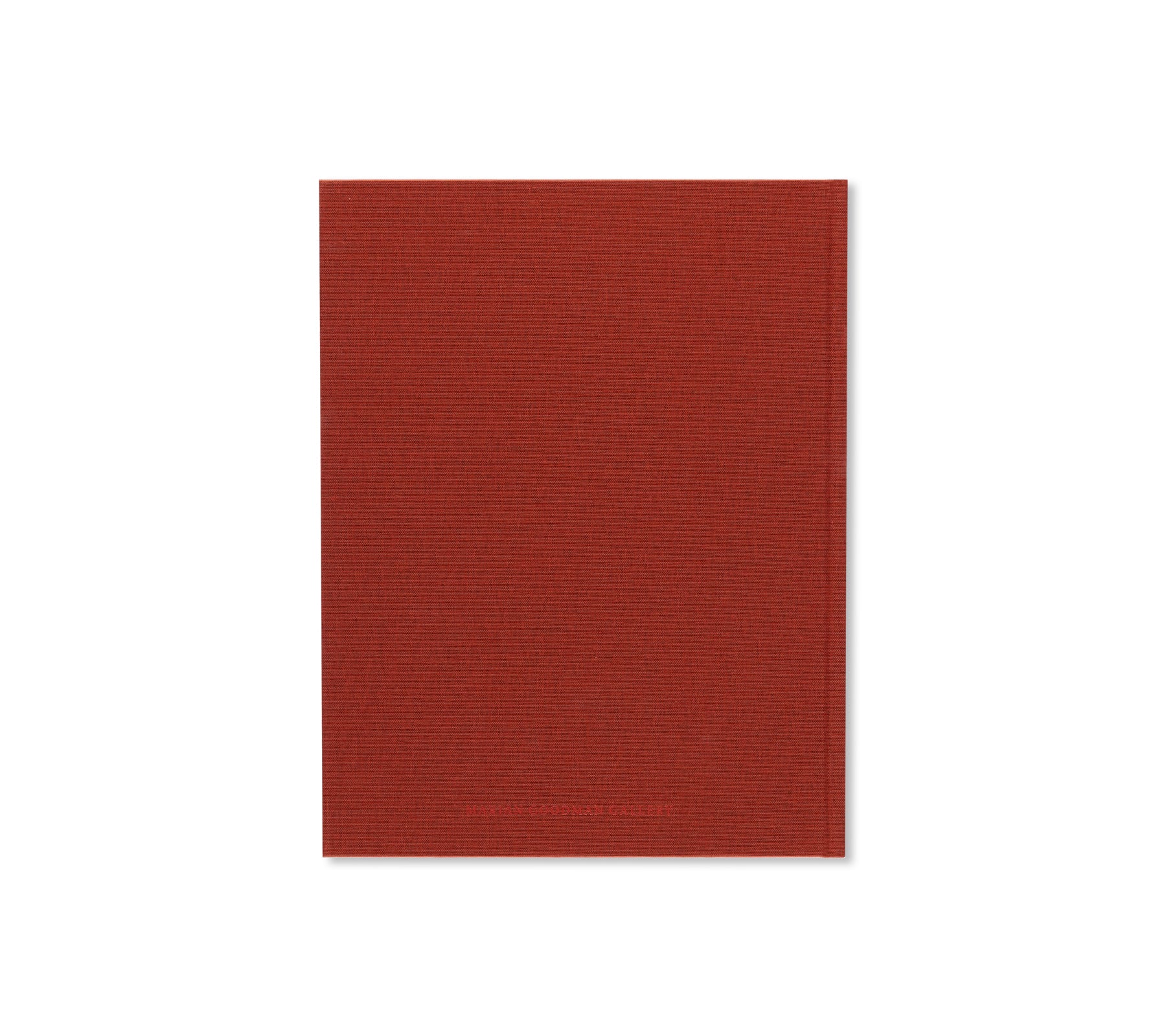AMERICA SEÑORES NATURALES by Lothar Baumgarten
ニューヨークとベルリンを拠点としたドイツ人コンセプチュアルアーティスト、ローター・バウムガルテン(Lothar Baumgarten)の作品集。サイトスペシフィックアート作品の中でも最も有名な「Señores Naturales」(1984)を起点として作品を形成してきた主要なコンセプトを読み解いた1冊。この本のために新たに書かれたエッセイ「Ground, Map, Floor: The Site and the Subject of Lothar Baumgarten’s Señores Naturales」において、著者のジョアンナ・ヴィッキー=バーコウ(Joanna Vickery-Barkow)は、作者の作品における「名づけ」という行為の重要性とその歴史的な意味を辿り、作者の作品が「作品が展示された場の空間的特性と歴史」とどのように共鳴していたのかを示している。本書に収録されている数多くのイメージは、作品アーカイブから選ばれたものであり、今回初めて出版される。作者の制作プロセスへの洞察を提示しつつ、コンセプチュアルな作品の豊かさと複雑さを明らかにする。作品の管理団体の協力を得て編集された本書は、その作品群がこれからの世代のアーティストにも影響を及ぼしていくことの証であり、制作から40年の月日が流れてなお作者の描いた概念が持ち続けている影響力や関連性について考えさせる。
「古くは皇帝の領地であり、ヴェネツィア・ビエンナーレのメイン会場であるジャルディーニと、元ナチスの建物であるドイツパビリオンとう2つの空間でこの空間と主題の出会いを演出するにあたり、バウムガルデンは過去と現在におけるヨーロッパとドイツの帝国主義、植民地主義、ファシズムの間のつながりを探し求めました。この複雑な空間的・時間的マトリクスの中に鑑賞者の身体を関与させることによって、バウムガルデンは帝国主義や植民地主義の考え方が西洋社会のイデオロギーの根幹にどれほど深く根付いているのか、そしてこのことが西洋人の空間と場所の体験にどれほど浸透しているのかを示そうとしたのです。」- ジョアンナ・ヴィッキー=バーコウ
America Señores Naturales retraces the history of one of Lothar Baumgarten’s most famous site-specific interventions from 1984, Señores Naturales, and uses it as a point of departure to explore some of the key concepts that have shaped his oeuvre. In a newly commissioned essay, “Ground, Map, Floor: The Site and the Subject of Lothar Baumgarten’s Señores Naturales”, author Joanna Vickery-Barkow retraces the importance of the act of naming in Baumgarten’s work, as well as its historical implications, and demonstrates how his art was responsive to both “the spatial properties and history of the sites where he exhibited”. Featuring a large selection of images from the artist’s archive, published here for the first time, this volume offers an insight into Baumgarten’s process, revealing the richness and complexity of his conceptual body of work. Edited with the support of Baumgarten’s estate, America Señores Naturales also attests to the influence of his work on future generations of artists, inviting us to contemplate the impact and the relevance of his ideas nearly forty years later. In the words of Vickery-Barkow,
“By staging this encounter in the Venice Biennial’s Giardini—an imperial enclave of old, and the German pavilion— a former Nazi building, the artist sought to draw links between European and German imperialism, colonialism, and fascism, both present and past. Implicating his viewer’s body within this complex spatial and temporal matrix, Baumgarten sought to show how deeply imperial and colonial ideas lie in the ideological ground of the West and the extent to which they permeate the Western subject’s experience of space and place.”
